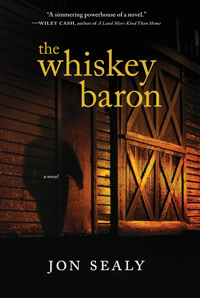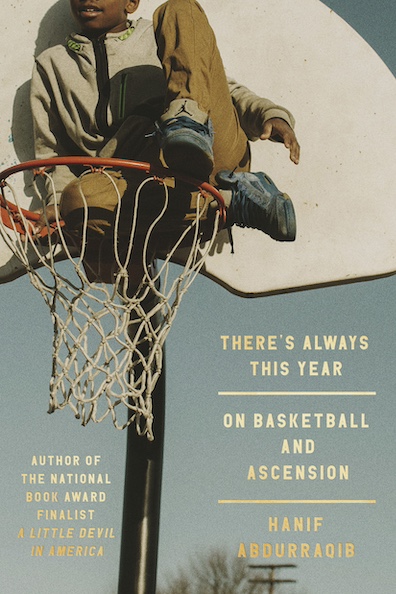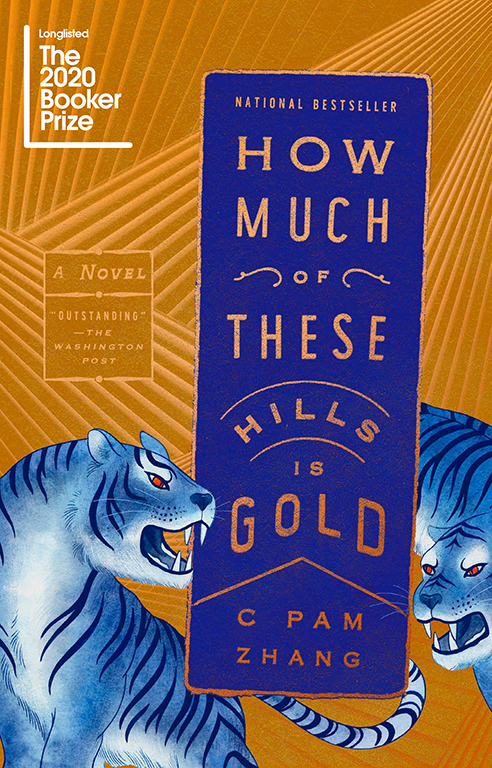Straight, No Chaser
Jon Sealy’s debut novel, The Whiskey Baron, satisfies with both flash and impact
In the late summer of 1932, two shots echo through the South Carolina hills. Outside a country speakeasy, two young men lie dead, riddled with shotgun pellets, and a third man is on the run for his life. Thus begins Jon Sealy’s debut novel, The Whiskey Baron, a story that concisely and poetically probes a great mystery, though not the one this first chapter sets up. Instead Sealy considers one the great unknowables—the mystery of how the human heart finds hope in the most unlikely circumstances and nurtures ambitions that burn bright enough to consume their possessor.
 The book’s first scene seems like the opening of a classic whodunit, but Sealy soon reveals who committed the murders and why. The novel then settles into an examination of the way an act of violence ripples outward, affecting a large cast of characters. “Mary Jane” Hopewell, the young ne’er-do-well whose feminine nickname contrasts with his hell-raising reputation, is a man on the run but with no plans to abandon the audacious dreams of success that put him on the receiving end of a twelve-gauge. Sheriff Furman Chambers is nearing retirement. Despite his persistent feelings of inadequacy as a lawman, he has dedicated his career to maintaining a status quo that is about to be violently upended. Quinn and Willie Hopewell, nephews of Mary Jane, are two boys facing crossroads—loss of innocence for the younger brother and the lure of a dangerous romance for the other. And the “whiskey baron” himself, Larthan Tull, is a hard man who will not allow his empire to slip away without a fight and one who views bloody vengeance as an essential part of doing business.
The book’s first scene seems like the opening of a classic whodunit, but Sealy soon reveals who committed the murders and why. The novel then settles into an examination of the way an act of violence ripples outward, affecting a large cast of characters. “Mary Jane” Hopewell, the young ne’er-do-well whose feminine nickname contrasts with his hell-raising reputation, is a man on the run but with no plans to abandon the audacious dreams of success that put him on the receiving end of a twelve-gauge. Sheriff Furman Chambers is nearing retirement. Despite his persistent feelings of inadequacy as a lawman, he has dedicated his career to maintaining a status quo that is about to be violently upended. Quinn and Willie Hopewell, nephews of Mary Jane, are two boys facing crossroads—loss of innocence for the younger brother and the lure of a dangerous romance for the other. And the “whiskey baron” himself, Larthan Tull, is a hard man who will not allow his empire to slip away without a fight and one who views bloody vengeance as an essential part of doing business.
These and other characters come to life through Sealy’s economical command of prose. Here’s his description of Mary Jane Hopewell’s soaring ambitions and soul shaking desperation:
Mary Jane had been named Wesley Jr. after his father, but, being a younger sibling, he was the sensitive type growing up and his mother had kept him in dresses all the way to grammar school, long after the rest of the boys had quit. The first time someone called him Mary Jane, the name stuck so firm it might as well have been etched in his birth certificate. Lately, he hoped people might start calling him Slim on account of how tall and lanky he was. … He liked that name: Slim Hopewell had a tough ring to it, Slim Hopewell could go into business against Larthan Tull, but the fact that he had a bullet hole in his shoulder and was about to go on the lam probably meant he was still Mary Jane at heart.
 Sealy balances his crime-novel plot against a deeper exploration his characters’ hopes, desires, and fears. Sheriff Furman Chambers feels insecure in his marriage and in his profession, despite decades of “success,” but he’s unable to admit the truth of his motivations even to himself:
Sealy balances his crime-novel plot against a deeper exploration his characters’ hopes, desires, and fears. Sheriff Furman Chambers feels insecure in his marriage and in his profession, despite decades of “success,” but he’s unable to admit the truth of his motivations even to himself:
Why was he a better choice than the previous sheriff, who was then as old as Chambers was now, a man who barnstormed and campaigned like a pugilist all the way through election day? And why had Chambers decided to make that move? What was it all for? Alma had asked him this on more than one occasion. He was a loner, and not one for self-promotion, unsuited completely for life as a politician. Yet he’d had a fire in him in his forties, a competitive soul that knew no bounds and, he’d thought, would only be satisfied by reaching the top of the local law enforcement food chain. All he could say to his wife was, “It needs to be done.”
The Whiskey Baron demonstrates a powerful sense of time and place as the shadow of the Great War, the corrupting effects of Prohibition, and the spirit-crushing Depression manifest themselves in the lives of its characters. These threads twist and cross each other, eventually coming together in a swift, violent, and shocking climax. The resulting book is an impressive debut and a satisfying example of “country noir” that deserves to be shelved alongside accomplished masters of the genre like Cormac McCarthy, Daniel Woodrell, and Larry Brown.

Randy Fox is a freelance writer whose writing on music and pop culture has appeared in Vintage Rock, Record Collector, East Nashvillian, Nashville Scene, Jack Kirby Collector, Hardboiled, and many other publications. He lives in Nashville.


